Over the weekend, Chris and I hung some string lights in our backyard, and we wanted to give you a proper tutorial on how we did it! We have plenty of ground lighting, but we really needed some overhead illumination for these upcoming summer nights, and string lights are the perfect solution. Here are 10 easy steps that you could easily tackle in half a day’s time.
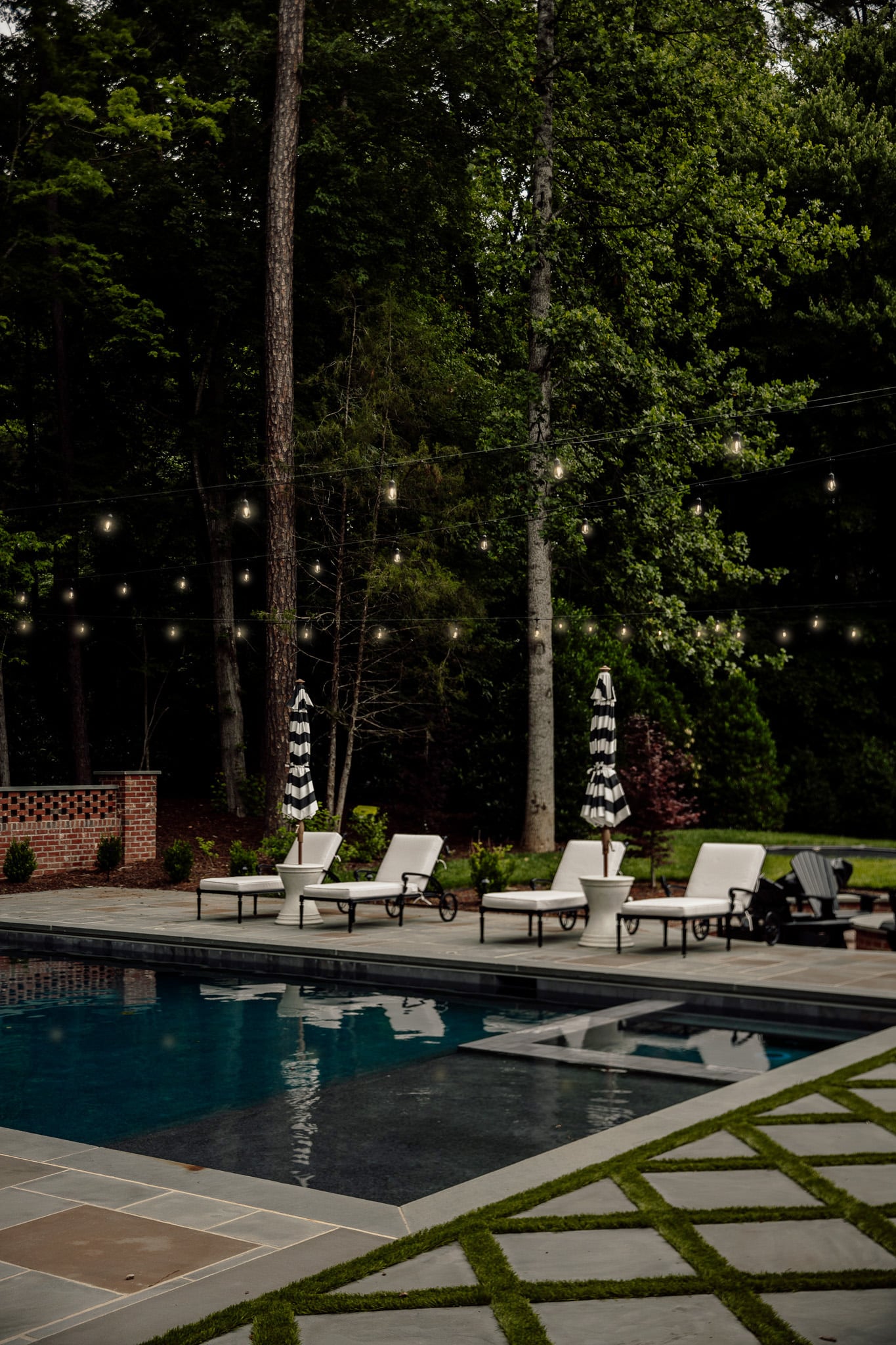
String Lights | Umbrellas | Umbrella Stands | Chaise Lounge Chairs | Adirondack Chairs
1. Safety first!
One thing we know for sure is water and electricity don’t mix! If you’re hanging lights above a pool, be sure to follow these guidelines so nobody ends up seriously hurt:
- String lights with 120 volts or less
- Must be plugged into a GFCI outlet
- Hang them 10′ above water or more (ours are hung at 14 feet high)
- Shatterproof bulbs
- IP65 waterproof rating for outdoors
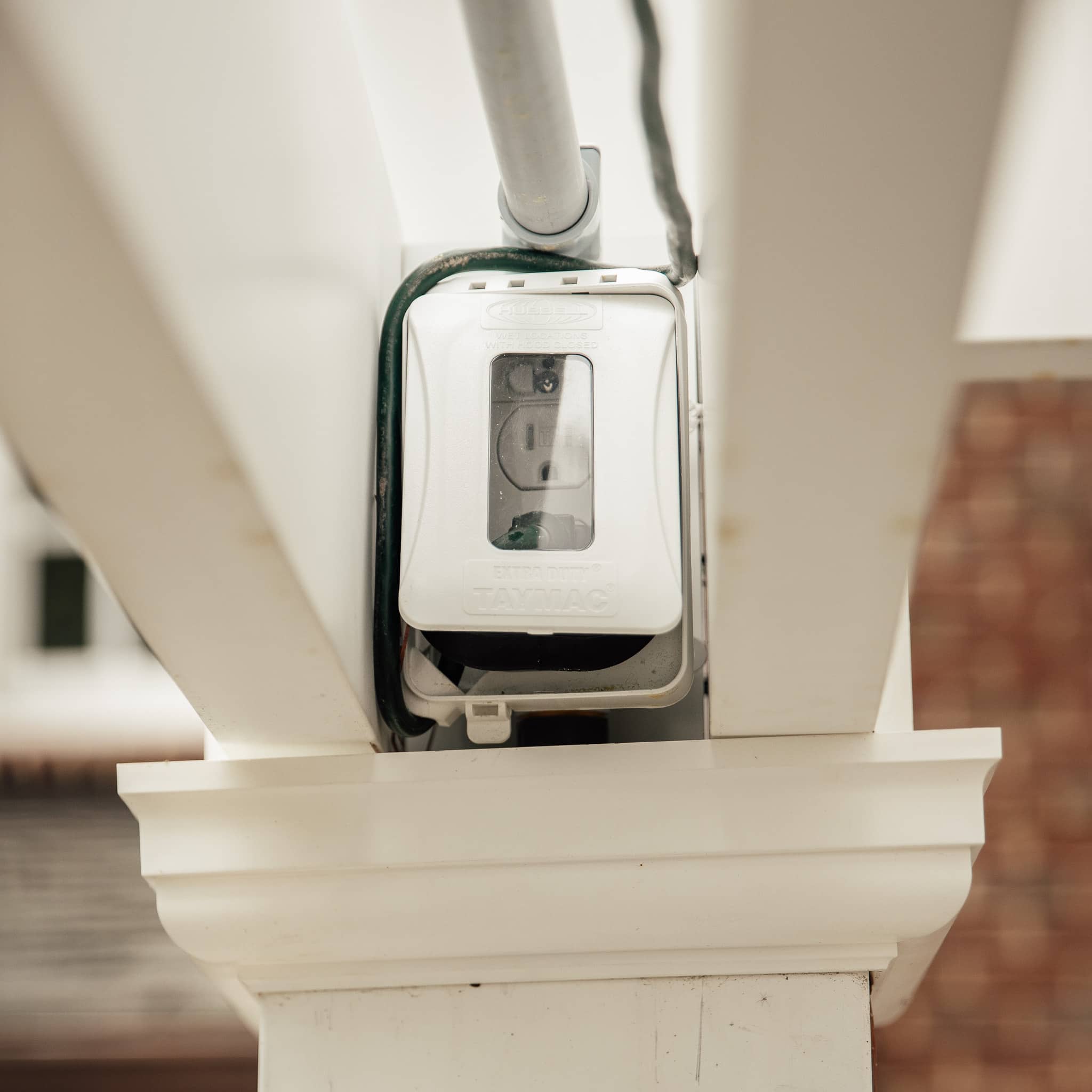
Of course, if you have a pool and are worried about the safety of hanging string lights above, you could either consult a professional or just don’t do it!
2. Make a plan
Next, you’ll decide what points you want to anchor to, how high to hang, and how taut or dipped you want them. You need to start somewhere near an outlet, then choose trees, posts, and other anchor points based on where lighting is needed. When we hung string lights in our friends’ backyard, we planted and cemented a post in the ground as an anchor and buried an outdoor-rated extension cord, so you might need to get creative. In this case, when we had our pergola built, we had a GFCI outlet installed with a switch. So any time we switch on the pergola pendants, the cafe lights will come on! This was our starting point.
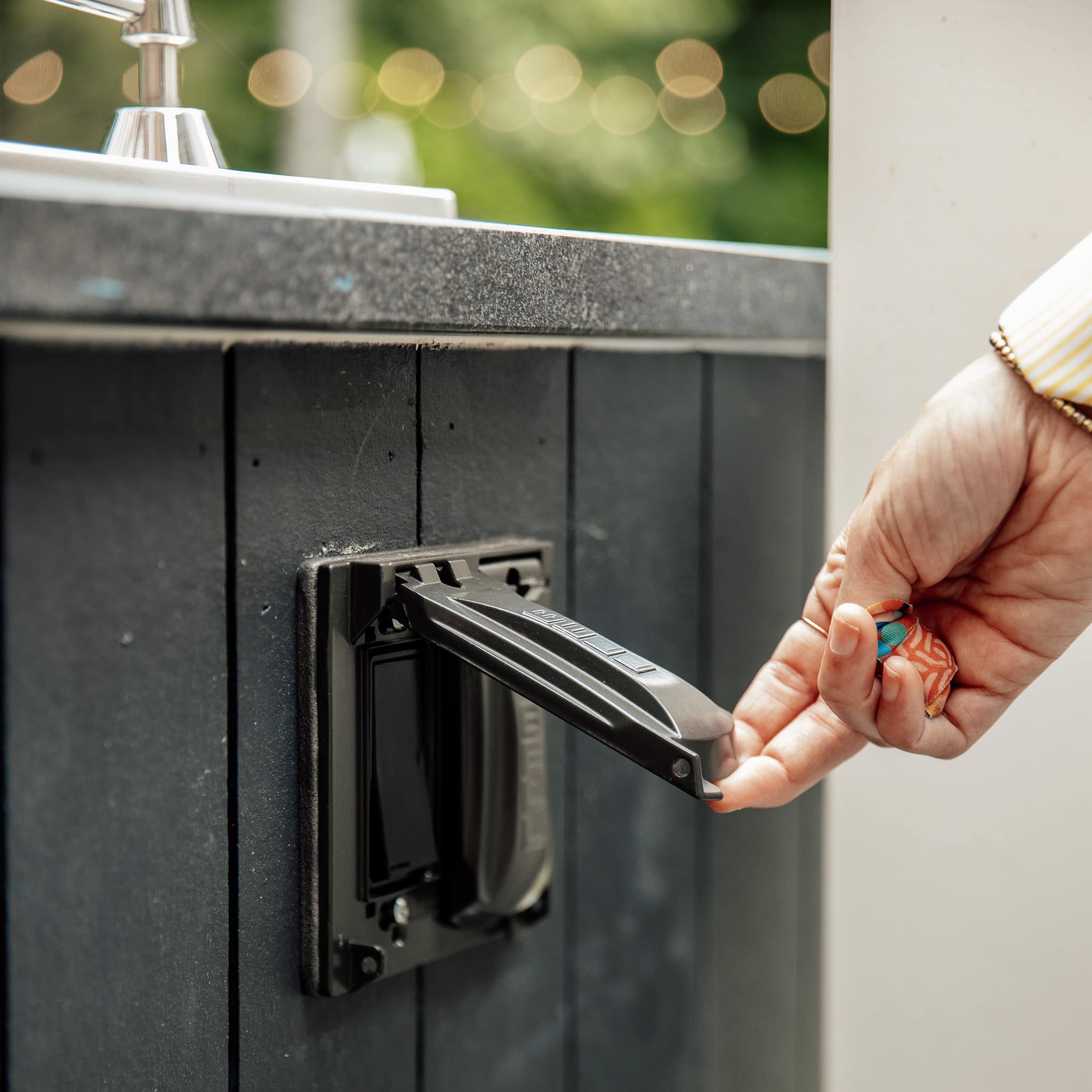
3. Gather materials + tools
- Galvanized steel cable by the foot (we used about 400ft)
- Pliers with wire cutters
- Eye hooks
- String lights (these came with zip ties, but you might want to buy a few extras)
- Driver with 1/8in drill bit, Phillips head, and screws
- Ladder
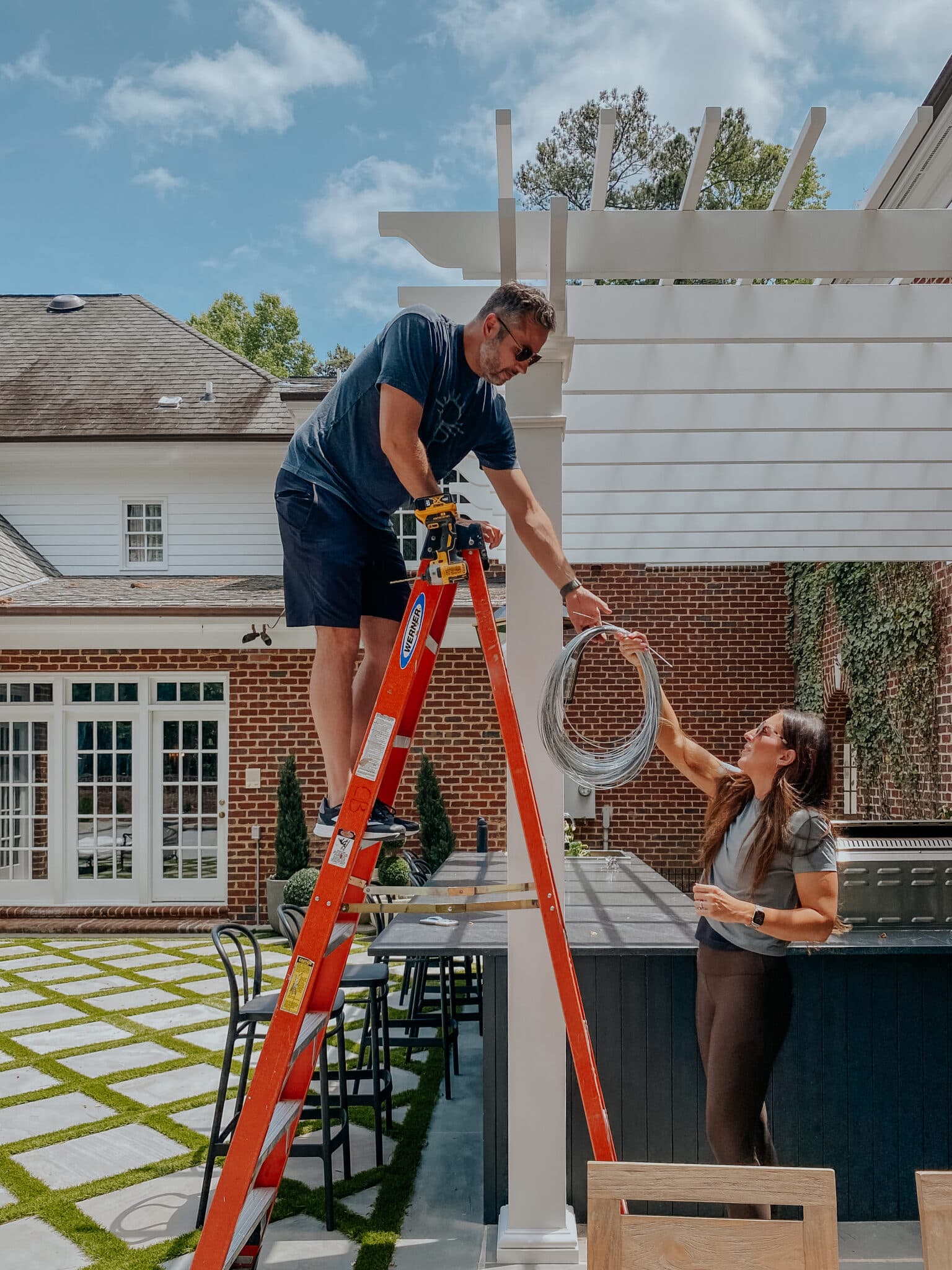
We put a lot of research into searching for the best string lights for the job, and we felt really confident in these LED lights from Amazon. Not only do they meet all of the safety requirements listed above, but they’re energy-efficient, 2700 Kelvin (which is my preferred temperature for ambience), and the bulbs are supposed to last for 13.7 years if you use them 3 hours a day! I’m sorry, what??
4. Secure your starting anchor
If your starting point is going to be secured into wood or a tree, then the eye hooks work great! Drill a pilot hole, then drive the eye hook into the hole. Pro tip if you want to speed things along, hold a screwdriver through the hook for turning leverage. If the starting point will be brick or stone, a masonry bit, hammer drill, and masonry anchors will be required. Make sure the anchors are appropriately sized for the bit being used.
5. Set the wire at the starting point
Now that you have your anchor in place run the wire through it and secure the wire. We did this by wrapping the wire around our eye hooks twice, then wrapping the wire around one of the pergola cross beams. Chris then used a flat bracket with two screws to secure the end of the wire to prevent unraveling. Obviously, this will look different from case to case, but the main point is you want this wire to be immovable and stable.
6. Run the wire to the next anchor point
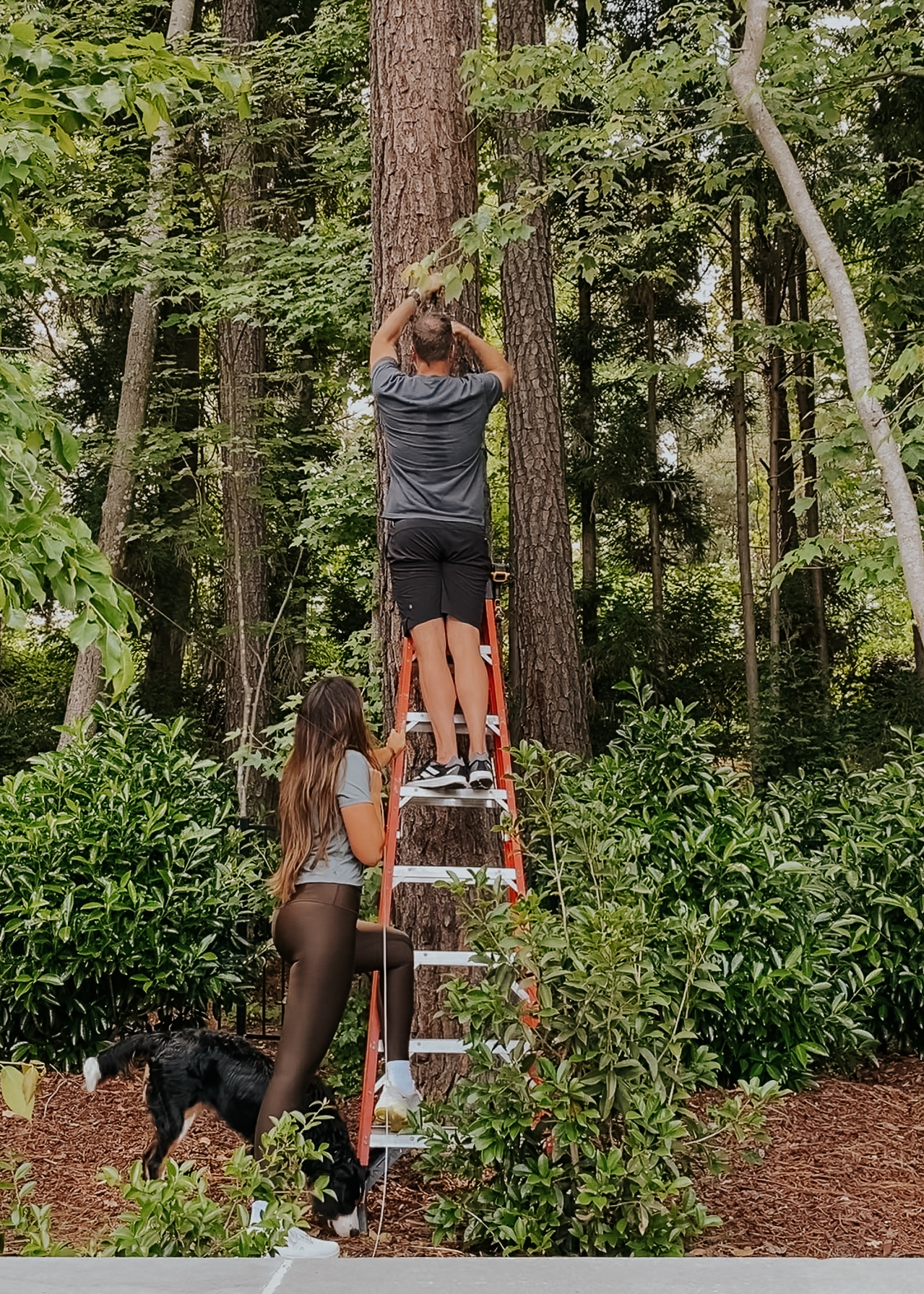
Pull the wire to the next anchor point and hold it up to determine placement. If possible, have the wire wrap around the pole, tree, or anchor point, crossing in front. This will reduce the drag on the anchor and prevent it from falling. Once you know the height, add the anchor in place and run the wire through it.
7. Repeat for all anchor points
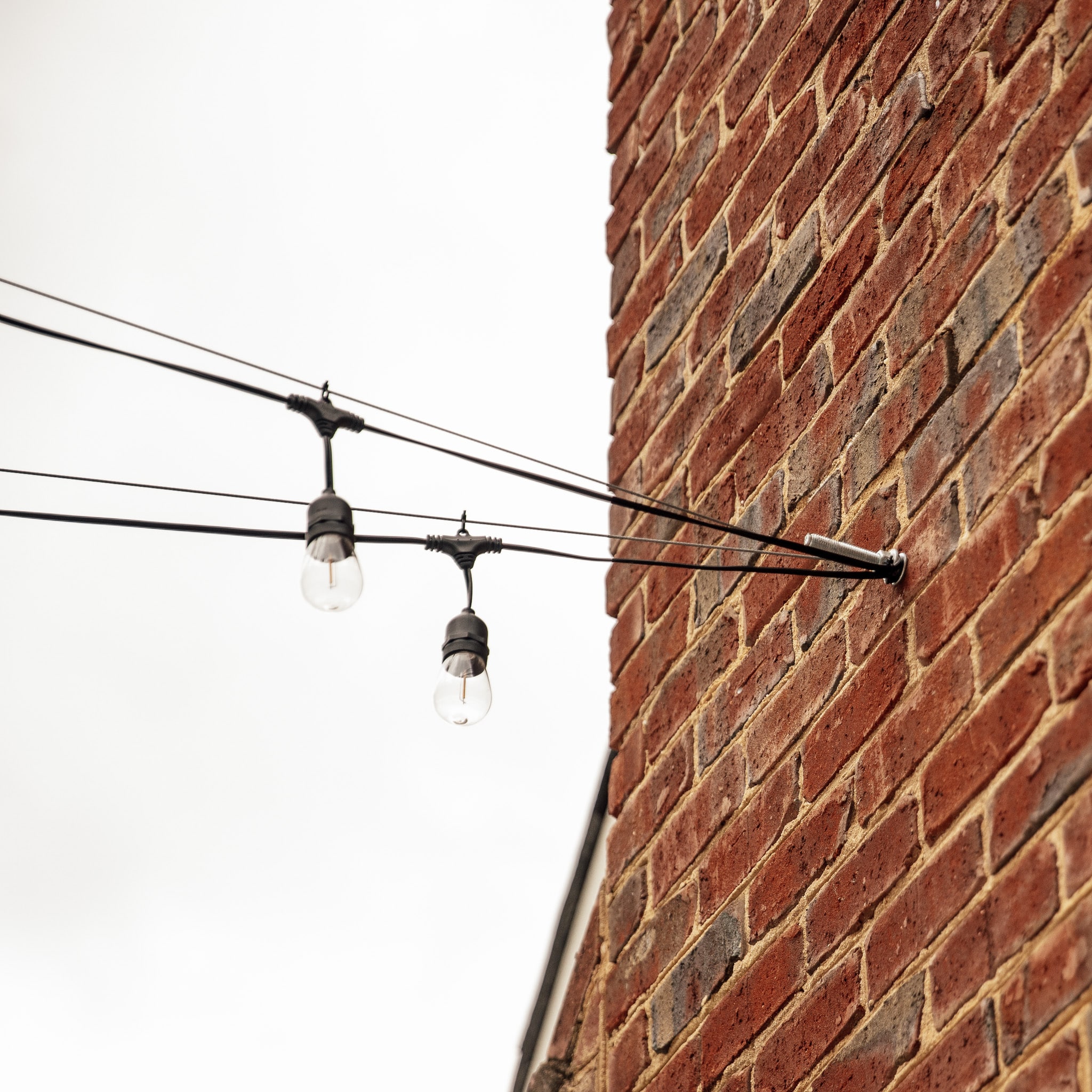
Depending on the material, you may need to switch between anchor types and materials. Always use anchor options best suited for the material they’ll be secured into. If you’re ever screwing eye hooks into a soffit or something that doesn’t allow the hook to be run around the back of it, consider running additional wire through the eye hook and screwing it into the wood soffit for additional tensile resistance.
8. Secure the end anchor and wire
Where the last anchor point is, secure it in the same way you did your starting point.
9. Hang the lights
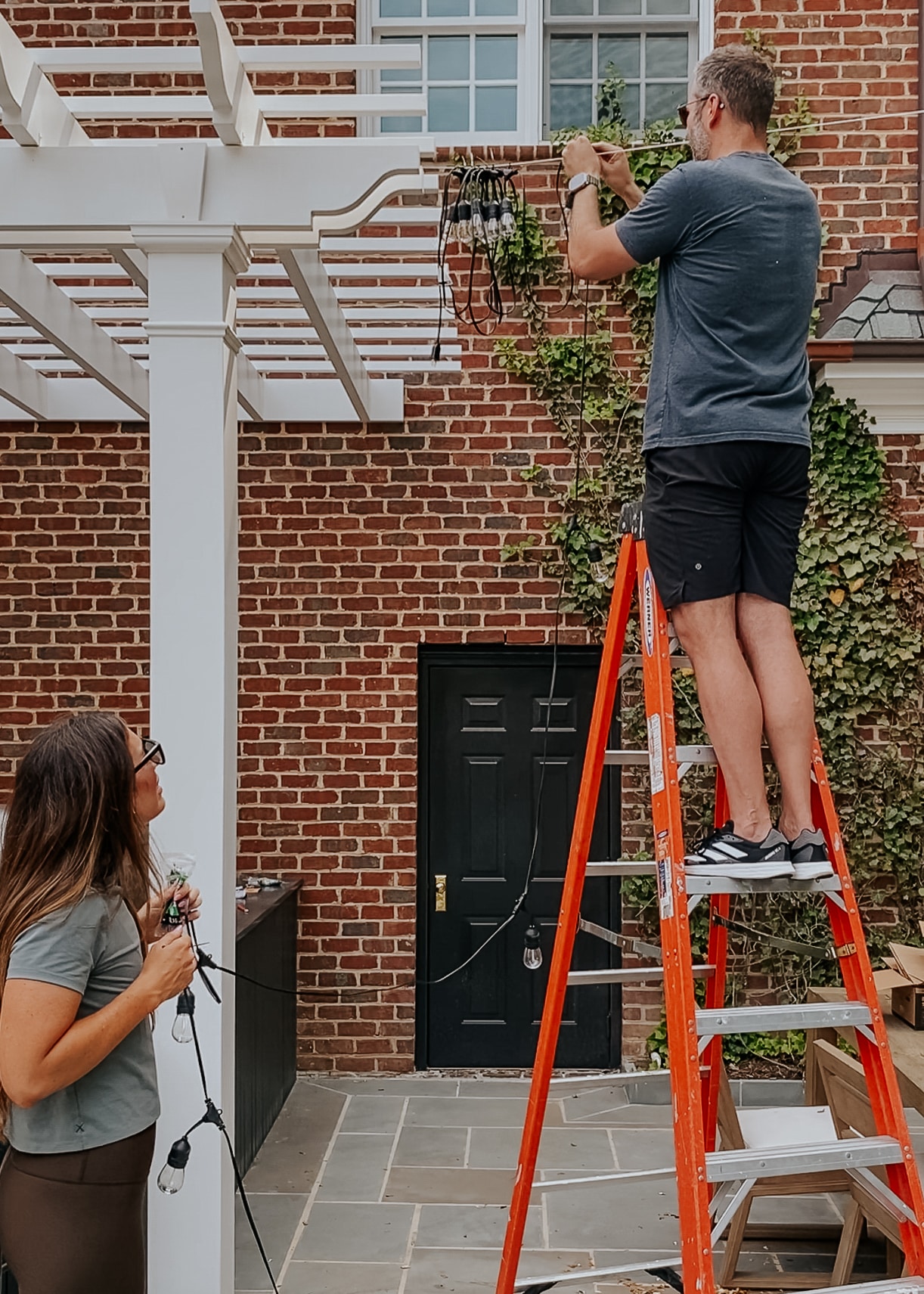
Using a ladder, climb up and hang the lights on the cable using the included zip ties. Be sure not to pull it too tight, or the lights won’t be able to slide along the wire. Once the lights are attached, pull them out along the cable until fully stretched out. Use zip ties to connect the lights to the anchor points at each length of cable.
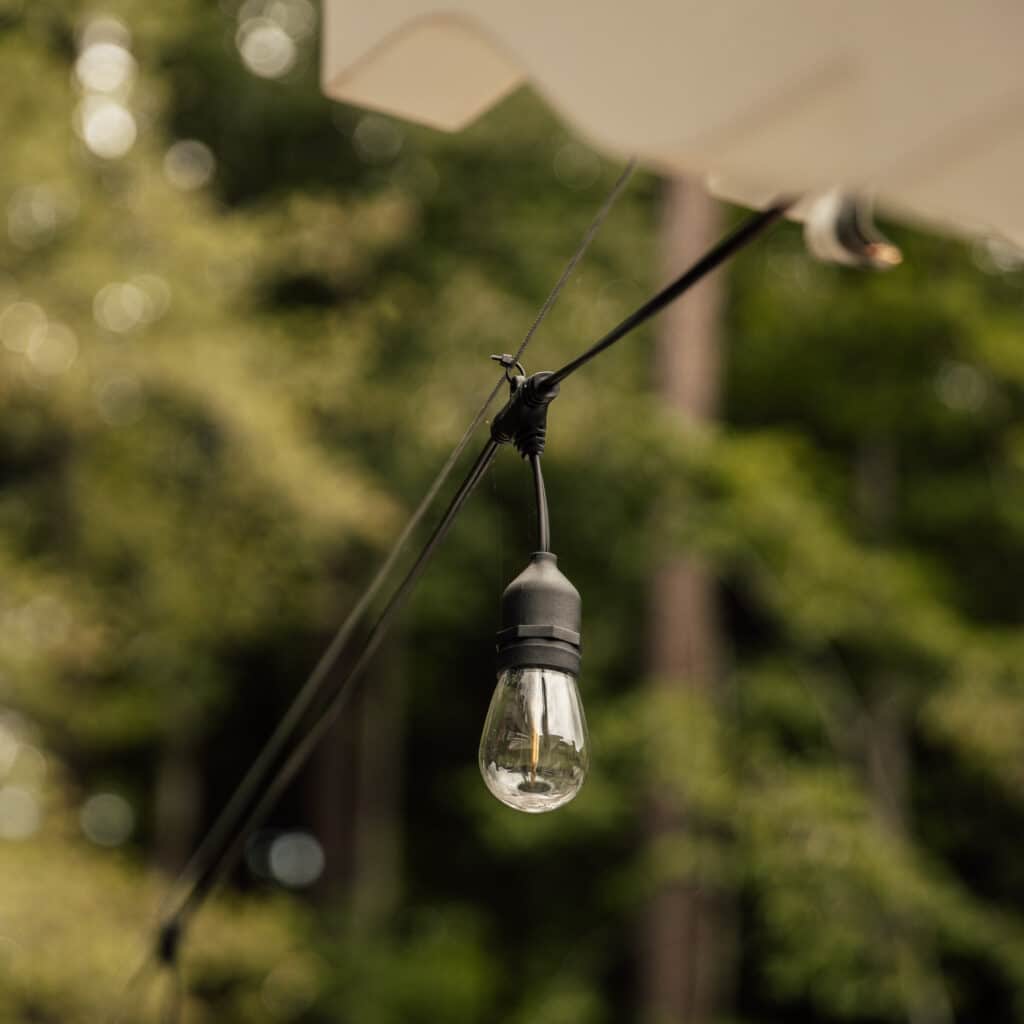
10. End the lights
The likelihood that you will end up with the exact length of lights you need for your cable is small. There are a few options for this.
- The first would be to take the remaining strand of lights and overlap them on the wire. This is common and safe, and although you might have double the lights for a few yards or feet, it’s not that noticeable.
- The second option would be to run the lighting around your end anchor point. For example, if it’s a tree, wrap the lights around the tree until you’re out of length.
- The option we chose to go with, which requires some electrical know-how, was to clip the final strand of wire, cap the ends with waterproof caps, wrap them in electrical tape, and run the wires into a waterproof junction box, secured and hidden on the back side of the tree. Only do something like this if you’re familiar with electrical work and you take proper care to waterproof and properly house the cut wire.
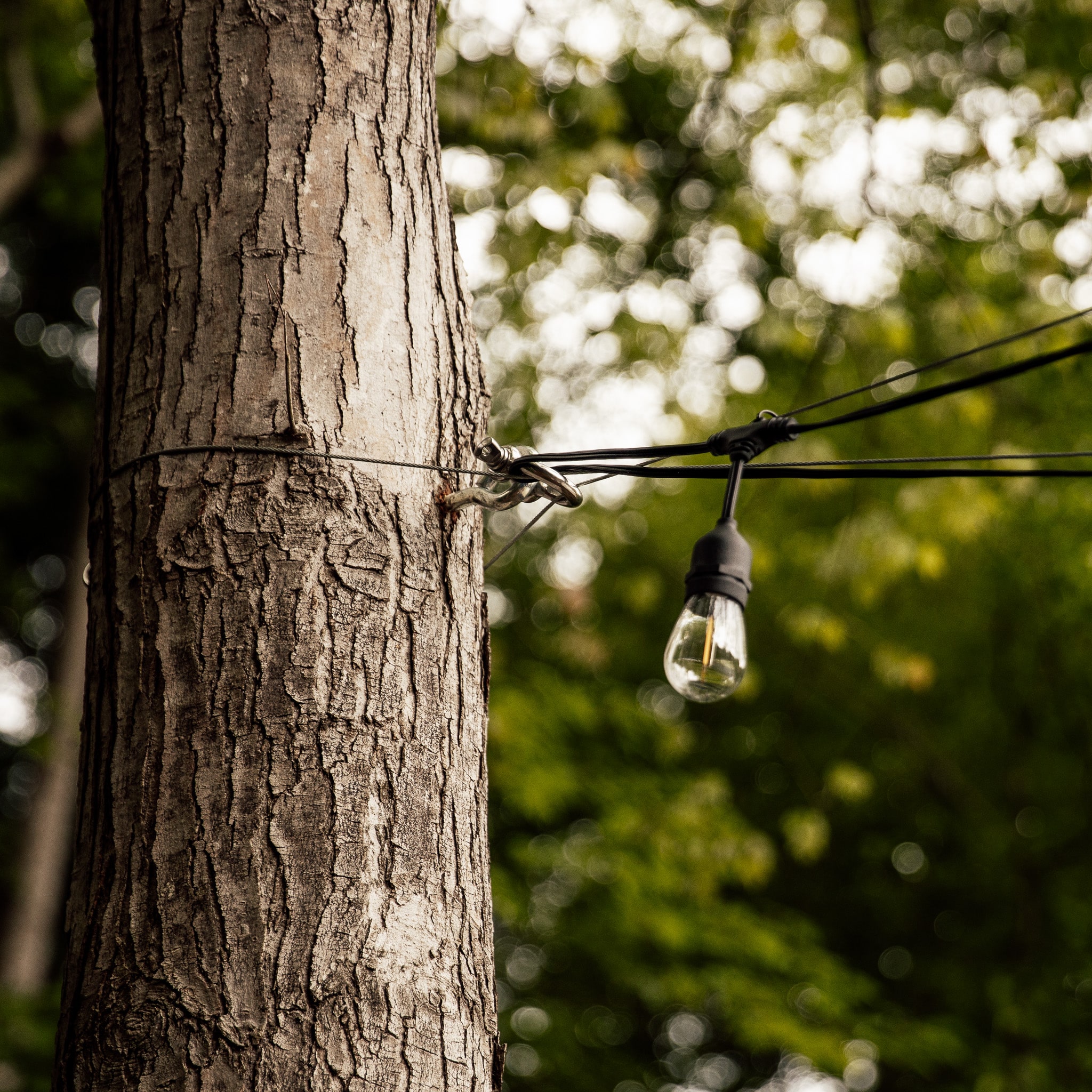
We’ve only had a few nights to enjoy these newly strung lights, but already they’ve really romanticized the overall aesthetic and mood of our backyard. My favorite thing is that when it’s really dark, they reflect light onto the pool water, and I can’t think of anything more dreamy.
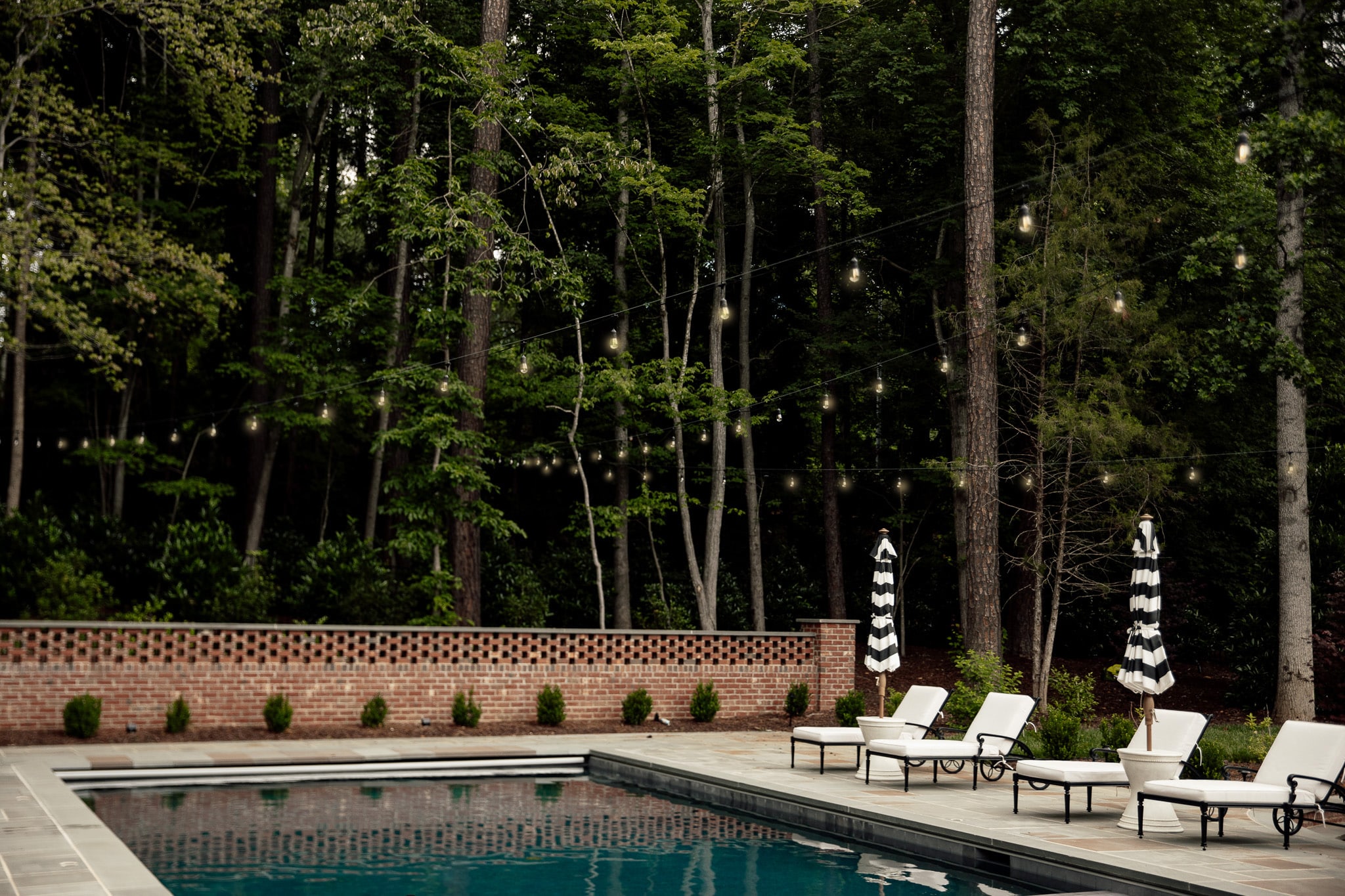
Shop our backyard
If you’ve hung cafe lights in your backyard, I’m curious if your process and experience were similar to ours!
Leave a Reply
What do you think?
Previous Post
Next Post
Semihandmade
Our wood grain Shaker cabinet fronts were designed for busy, high-traffic homes like ours. Clad with durable textured thermofoils, this line is compatible with Sektion, Akurum, Godmorgon, and Besta cabinets from IKEA. It's the perfect, practical way to add the warmth of wood to all the rooms of your home.
Collaborations
learn more
next
Loloi
We have teamed up with Loloi to create a line of rugs that are as affordable as they are beautiful. This collection houses a great mix of traditional and modern rugs, in cottage-y colorways, as well as vintage-inspired beauties that you’ll want to roll out in every room.
Collaborations
learn more
next
STUGA
We partnered with Stuga on a line of hardwood floors — The Ingrid is really livable, and the color is very neutral. It doesn’t lean warm or cool, it’s that just right in-between. We have really loved putting it everywhere in our house. It’s the best jumping-off point for design, no matter your interior style. In addition to being beautiful, Ingrid is really durable — we have three kids, and we always have a home construction project going on. Ingrid stands up to it all.
Collaborations
learn more
next
SHop all
What We're Right Now
What We're Right Now
Looking for our favorite things? A place to shop our home room by room, or just catch up on what Julia's wearing / loving right now? Browse the CLJ shop.
Loving
Portfolio
Design
Befores, afters, mood boards, plans, failures, wins. We’ve done a lot of projects, and they’re all here.
BROWSE BY CATEGORY
let's break this thing up
We have a long-standing relationship with DIY, and love rolling our sleeves up and making it happen.
Projects
Even when you don’t want to rip down a wall, you can make that space in your home better. Right now.
read more
read more
read more
02
01
03
looking for inspiration?
A reader recently asked me if I’m starting to fully embrace traditional style and whether we still consider our house to be a “modern Colonial” and why. It was a really great question and so timely — I had really just been thinking about my approach to this home and how my style has changed […]
SEARCH THE BLOG
We've been doing this since 2009 and we've posted a whopping 24145+ blog posts and counting. You might need a little help searching, huh?
looking for something?
find stuff like:
Can We Send You Our Love Letter?
Another way for us to stay in touch! Joining our weekly newsletter gives you access to exclusive content, never-before-seen photos, your questions answered, and our favorite DIYs. Sign up below!
Follow Along on Instagram
Welcome to our online community where we've posted home, DIY, style, renovations, and family since '09. Renovating our #cljmoderncottage in Idaho and headed for new adventures in Raleigh, NC. #cljfam #cljtransformations
@chrislovesjulia
Links
Get Around
Make yourself right at home
Portfolio
Design
Casual Friday
Projects
Lifestyle
Gift Guides
All Posts
Shop
Love where you live.
Social
RivrLinks
Links
Get Around
Make yourself right at home
Portfolio
Design
Casual Friday
Projects
Lifestyle
Gift Guides
All Posts
Shop
Love where you live.
Social
RivrLinks


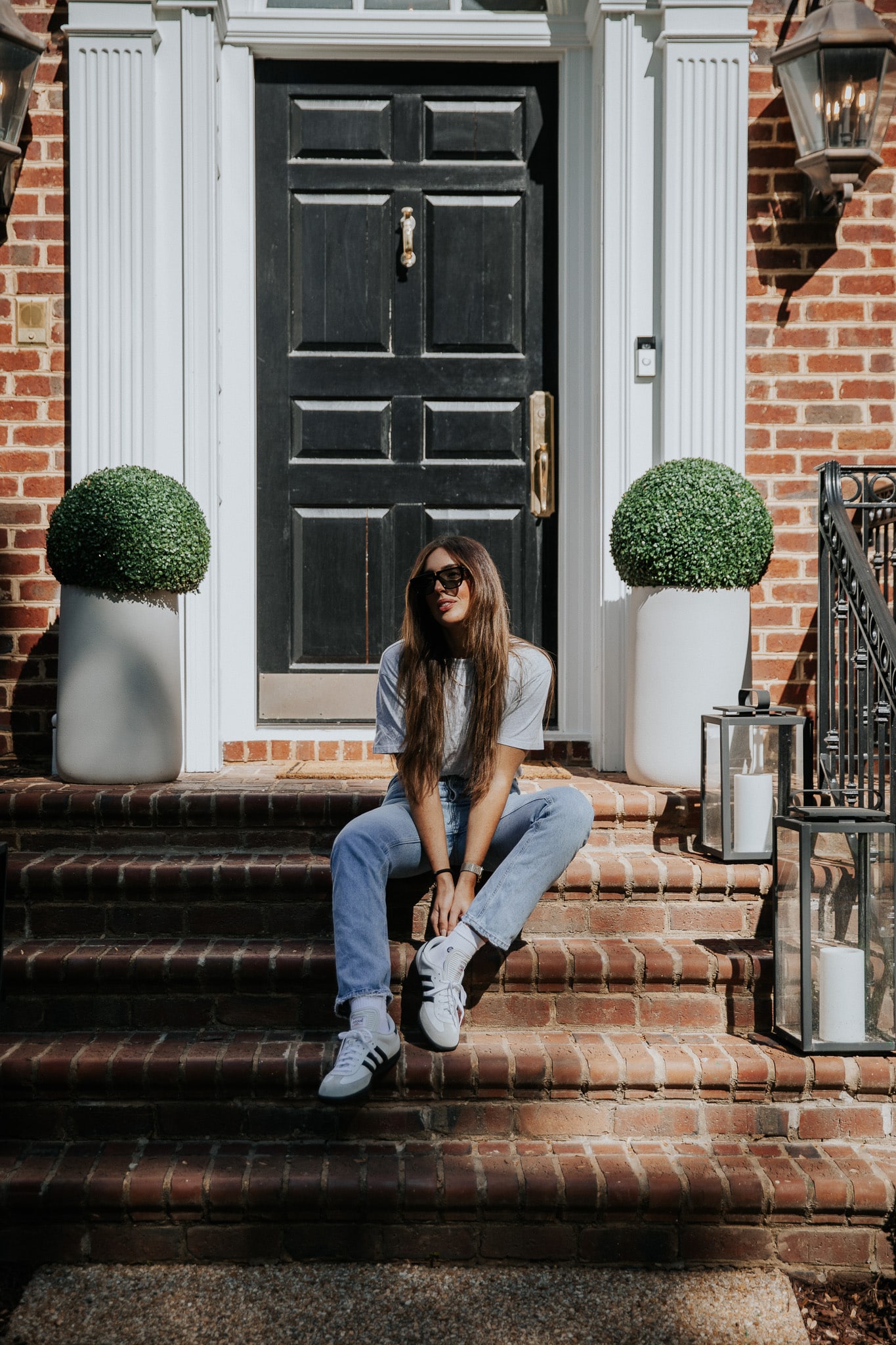
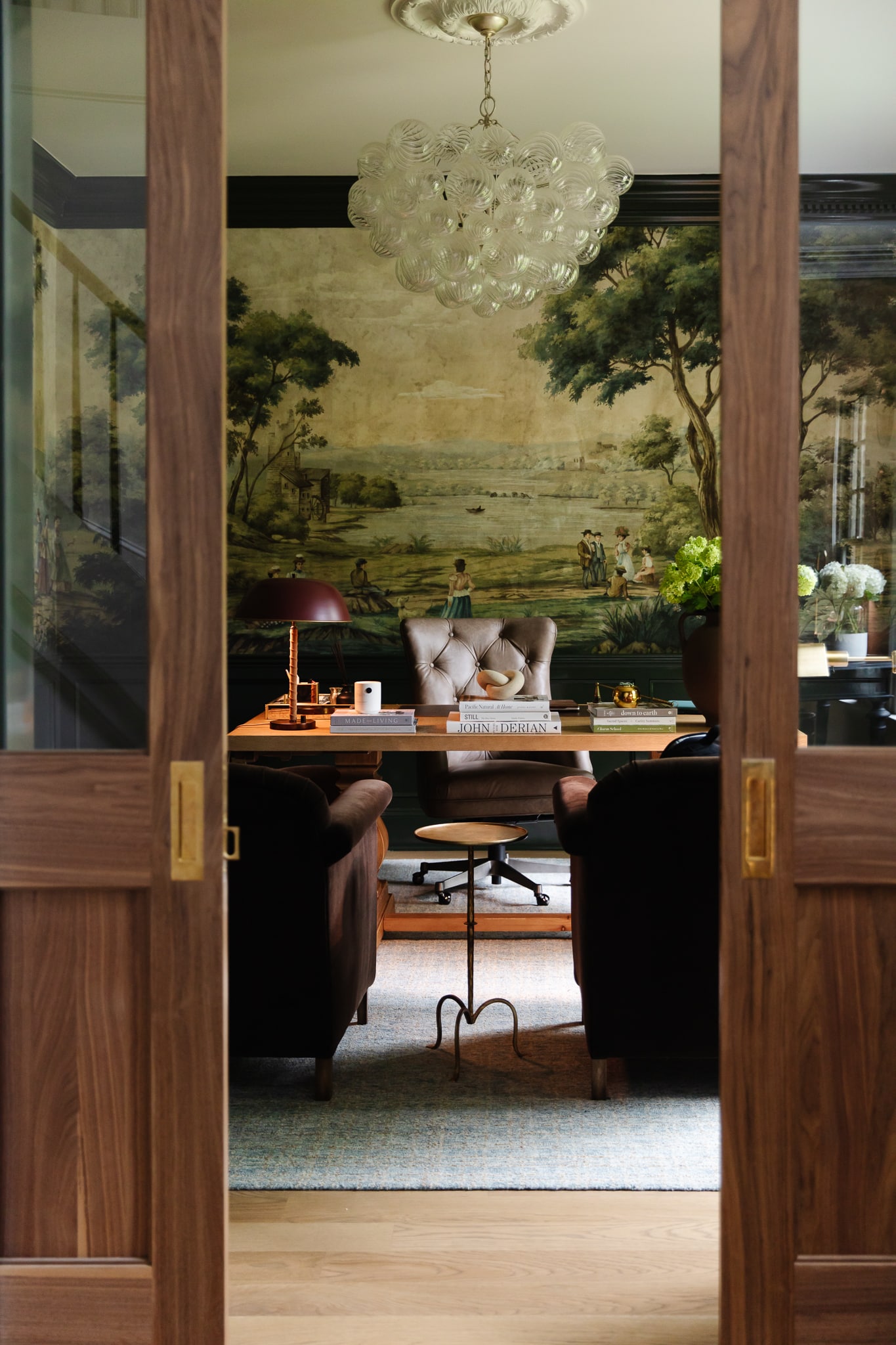
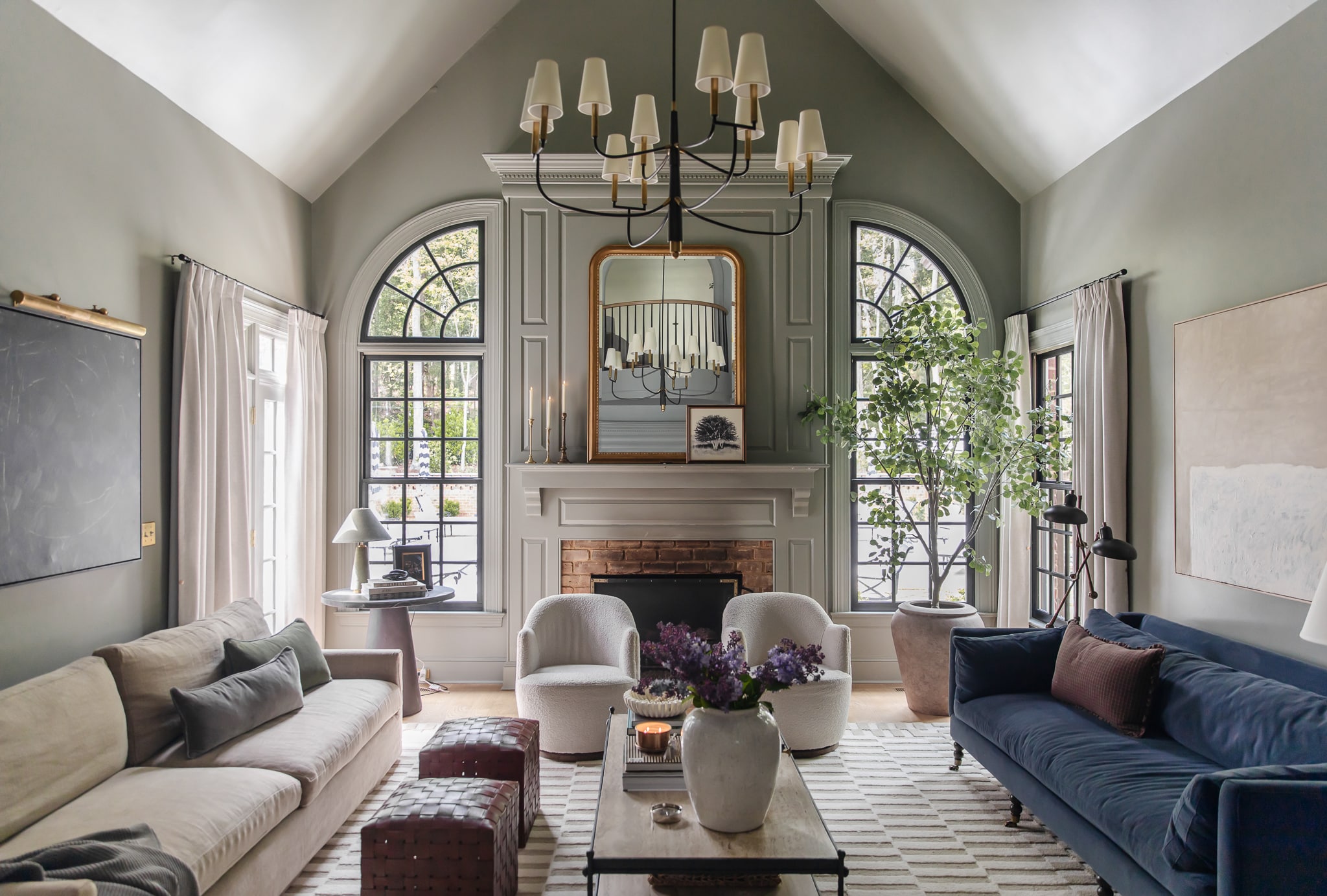

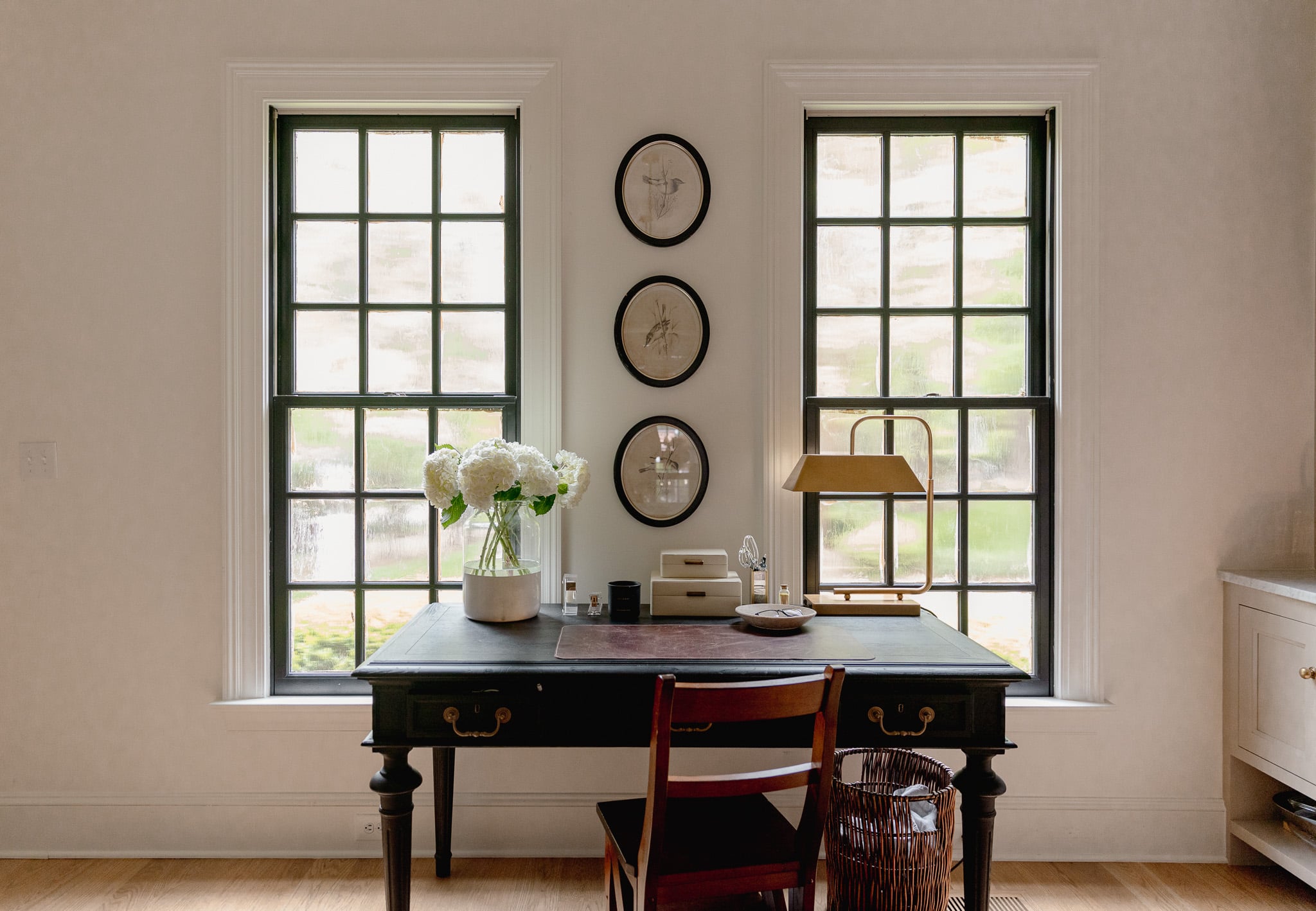

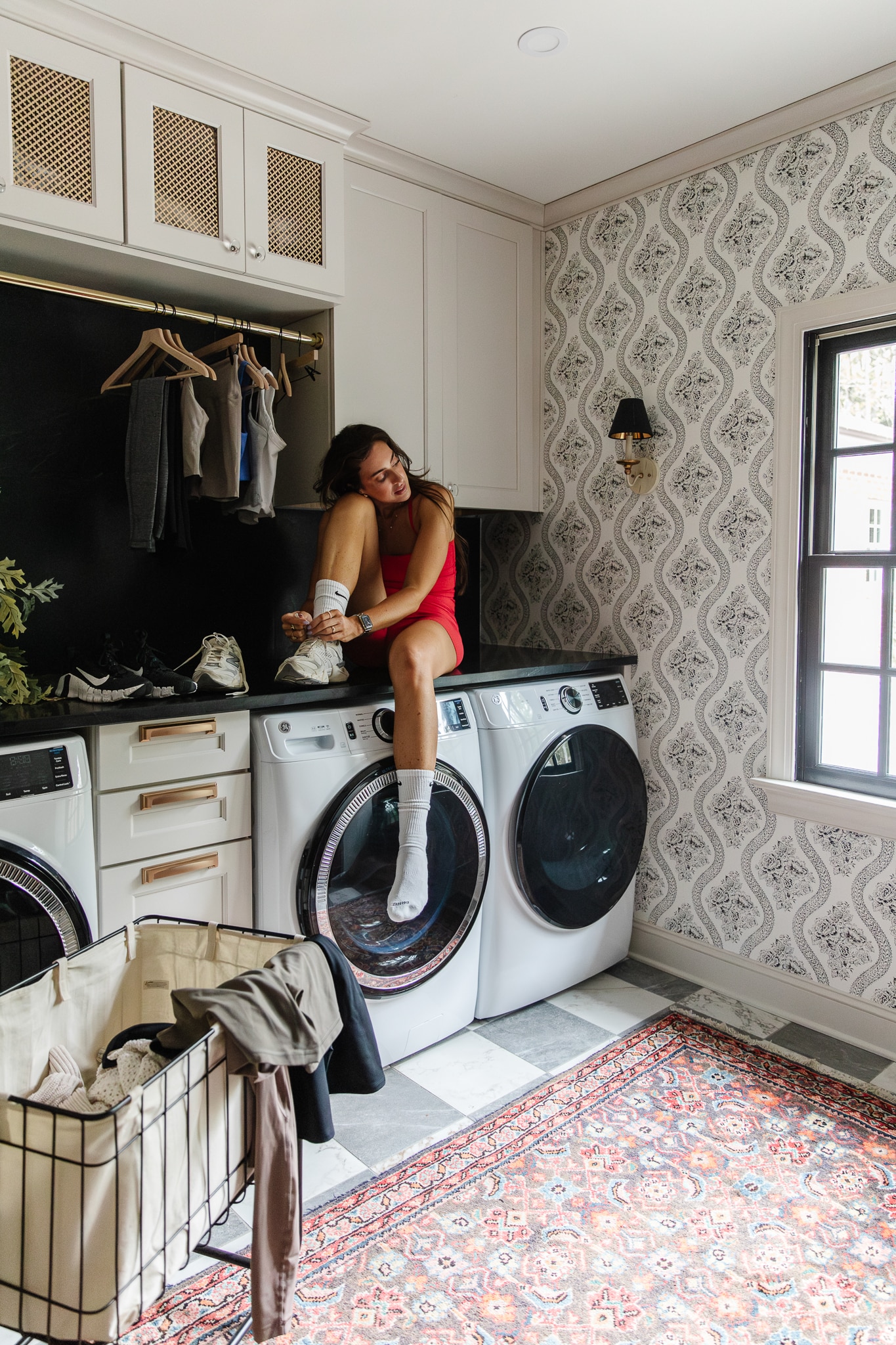
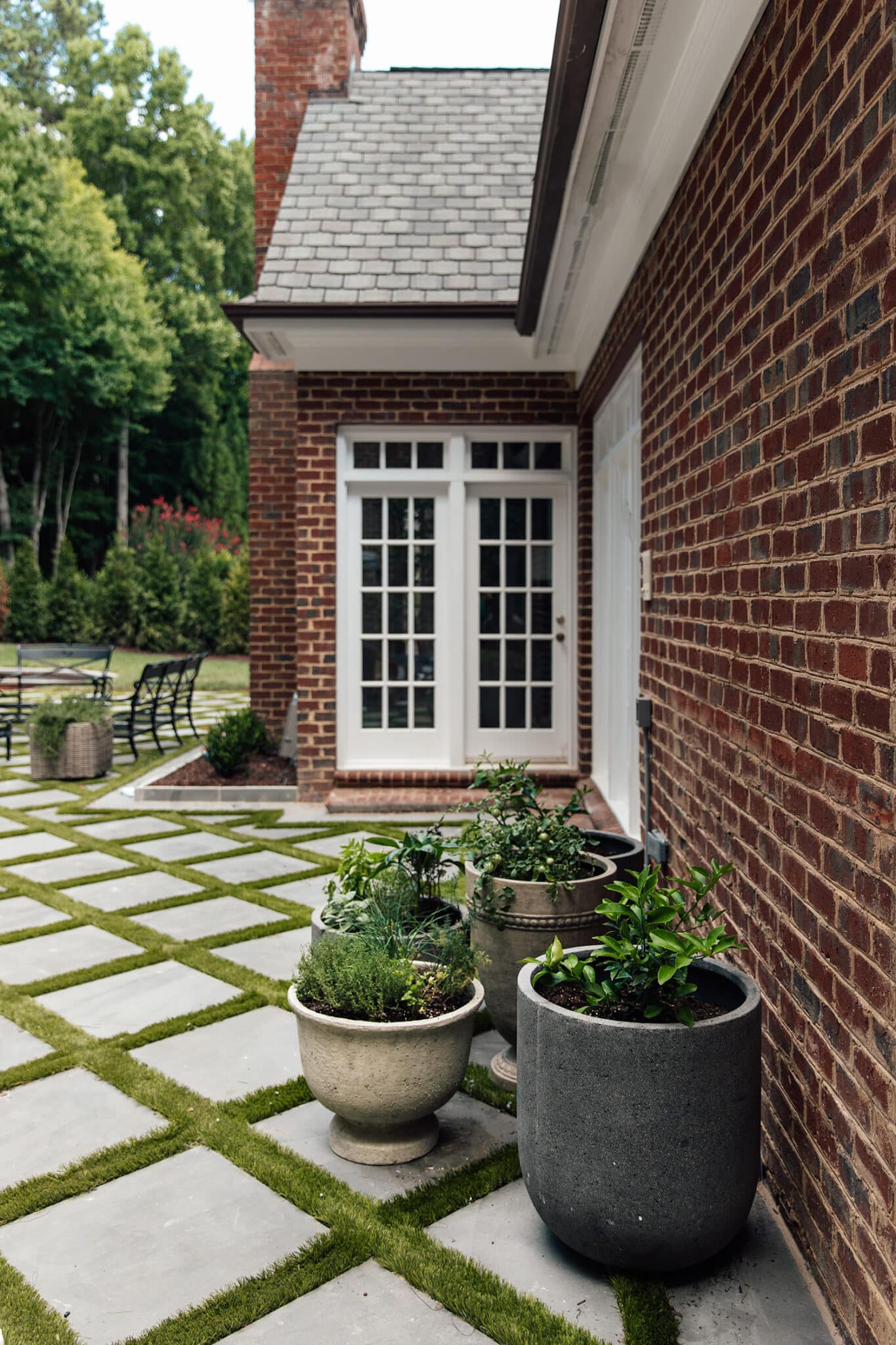
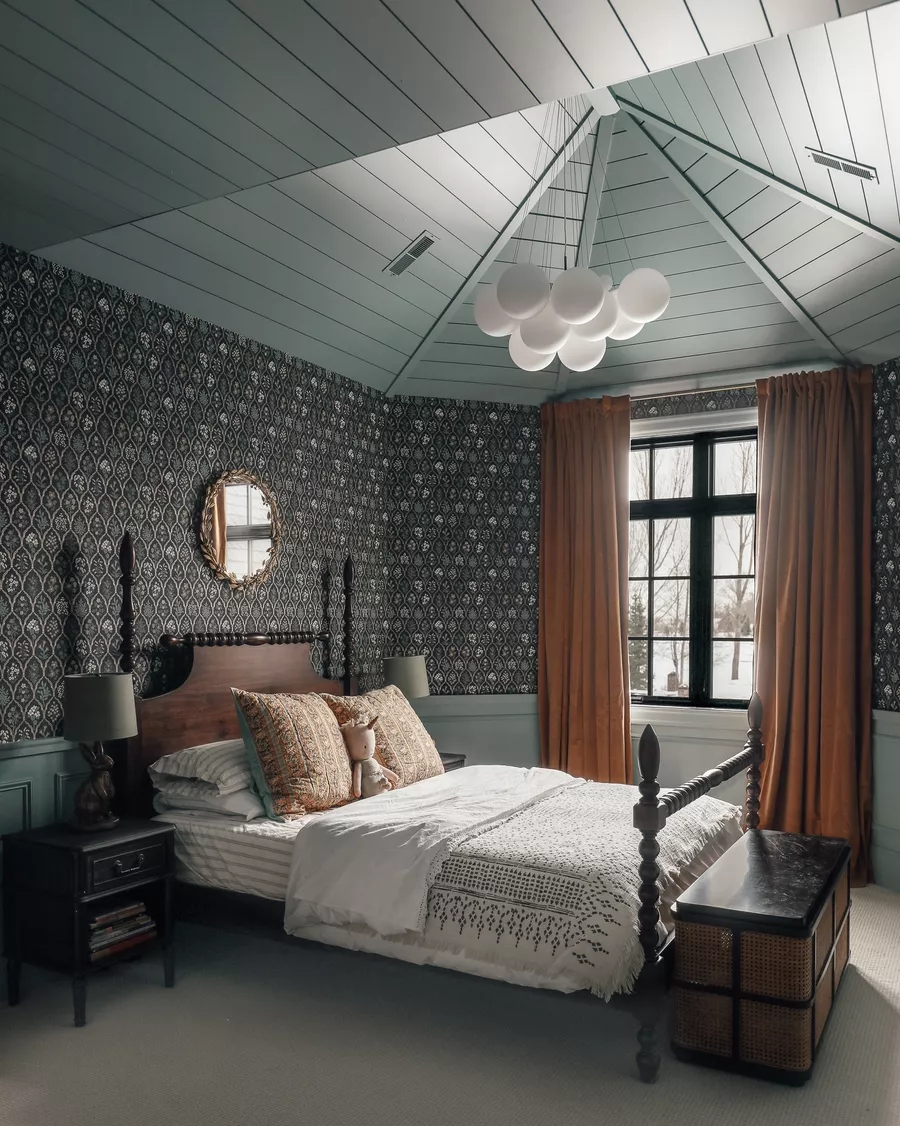
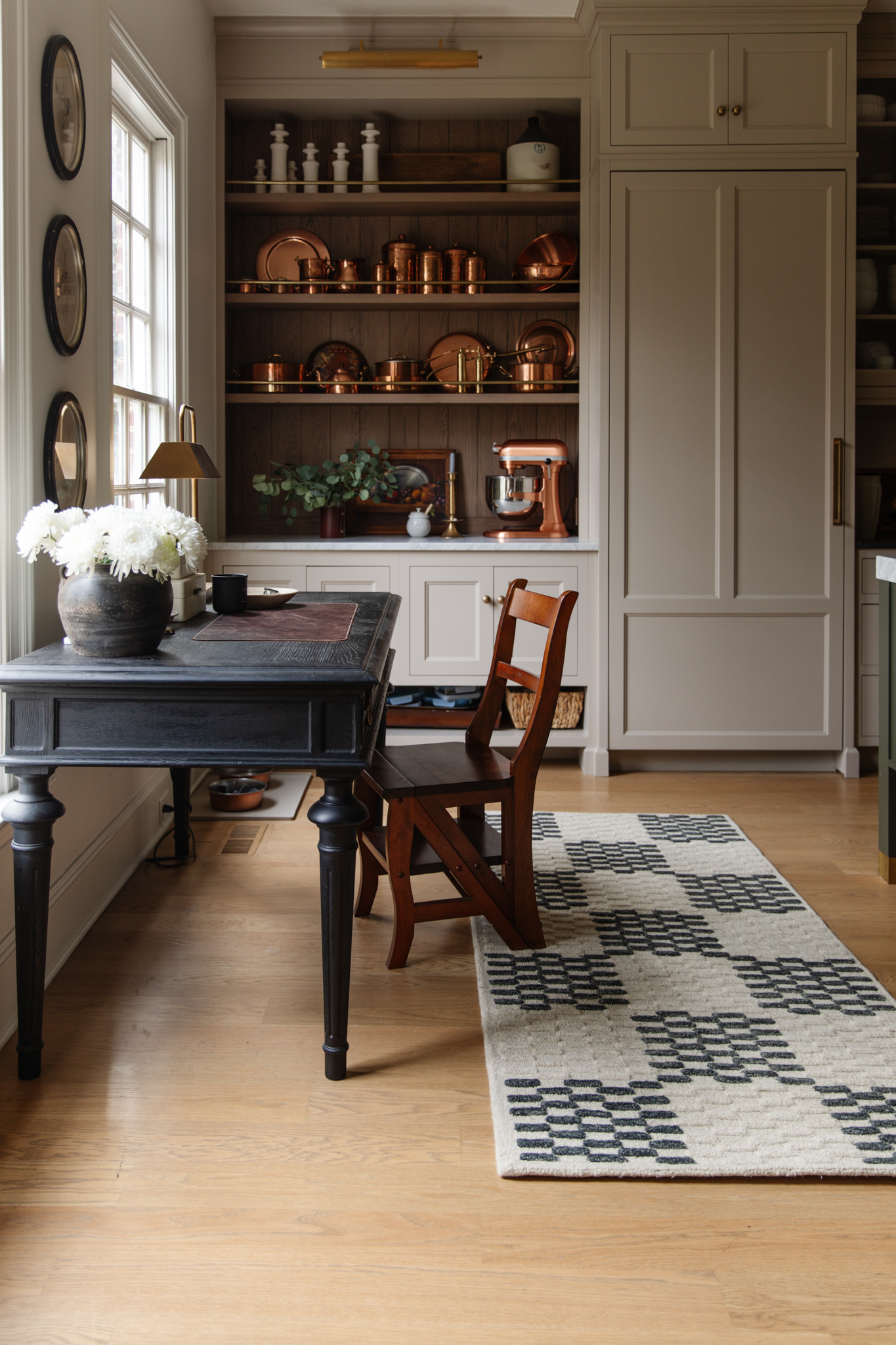
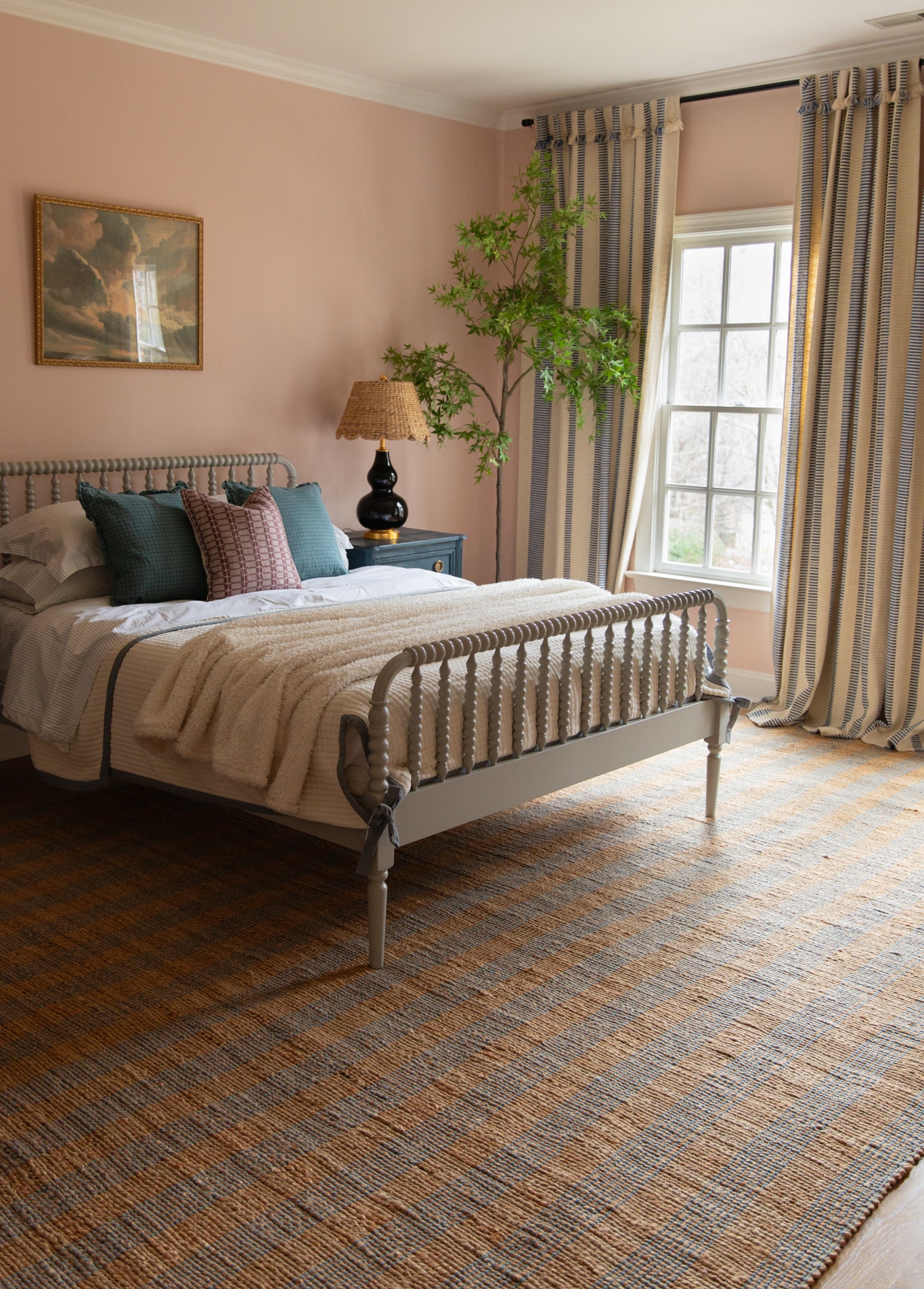
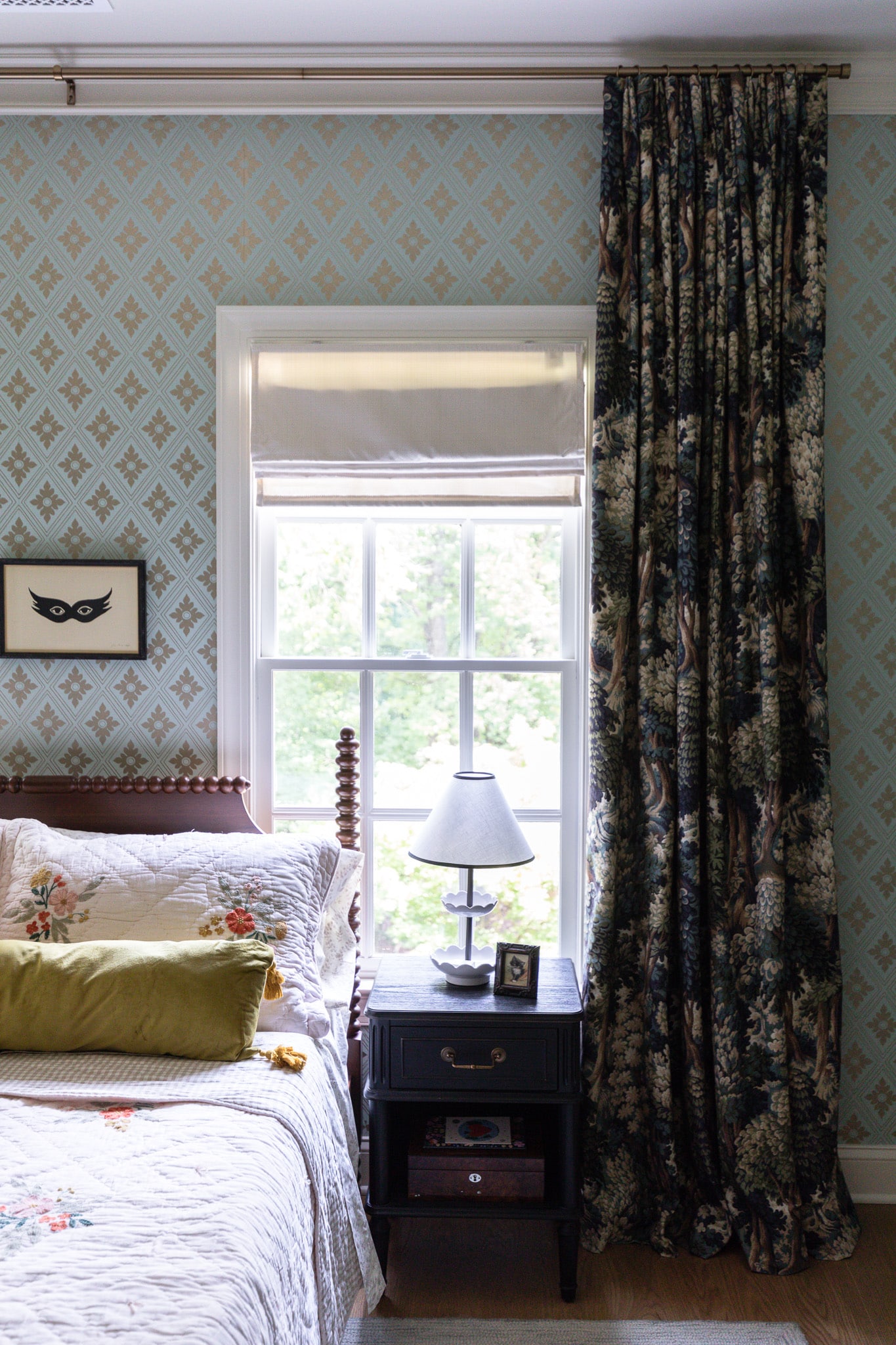
Wow! Very informative and impressive lines. Transformative outdoor lighting installation. Enhance curb appeal and safety simultaneously. Consider incorporating solar-powered fixtures for eco-friendly brilliance.
My husband and I bought a crimping tool and formed loops at the anchor points for our patio lights. We had to replace one section when the wire frayed and this method made it so easy! We didn’t have to re-string the entire setup.
I’m sorry but for 500k, your backyard should include professional lighting.
We did the same technique over our string lights over our patio. However, after 3 years, the wire has started to rust and come apart, as have the turn buckles. Just something to keep an eye on.
Do you mind sharing the measurements you used to guage your design for the lights? Thank you!
The lights look great! I love the idea of using zip ties to secure them to the wire. The brand we bought (a solar version) came with their own plastic clips, but I’m worried they might not survive the first winter storm.
Using zip ties work but here in Texas I’ve got to replace them every 2 or 3 years. They start yo get brittle and break.
I was looking forward to this tutorial, but like the IG stories that documented the project, there aren’t enough visual aids to show the hardware being installed and the cable attached. The instructions are there, but photos always help. Other than that, it’s a beautiful job and string lights just make all the difference win an outdoor space. Lighting is everything!
I highly recommend using turnbuckles for attaching cables to their anchor points — it makes it so much easier to get sufficient tension on the cables so they don’t sag considerably.
These are cute and I hadn’t thought of using wire to clip the lights too. But you would have done better to cushion the wire around the tree as otherwise it may damage it. Even a shallow wound can cause big problems for the tree. Maybe check with your landscaper.